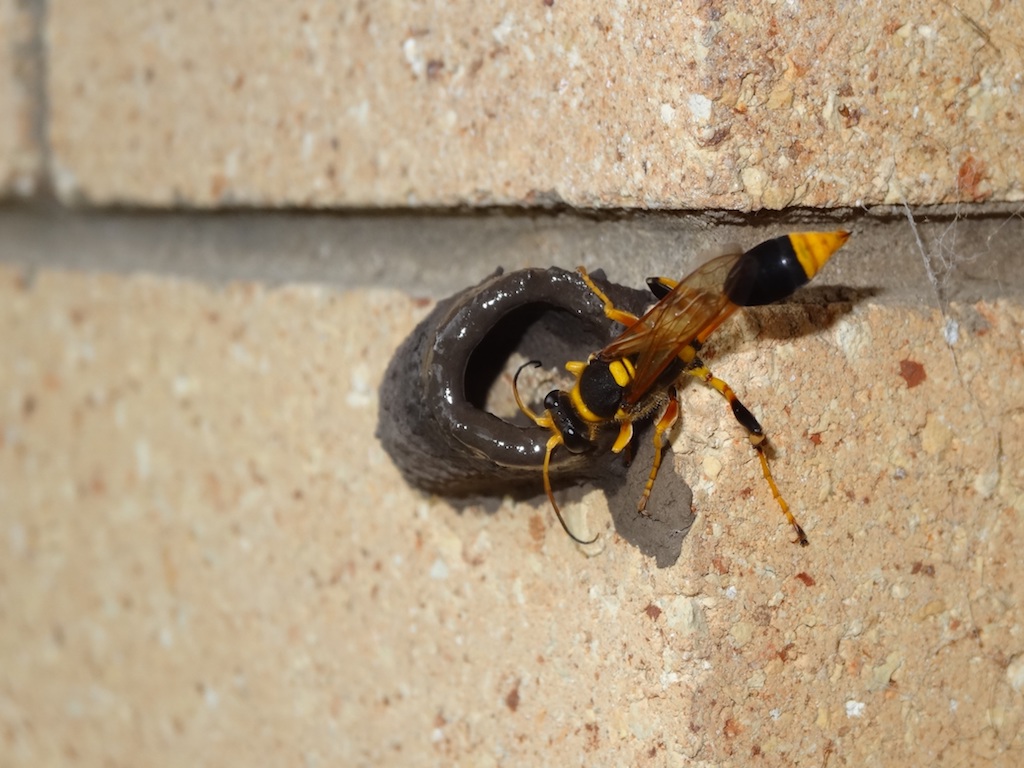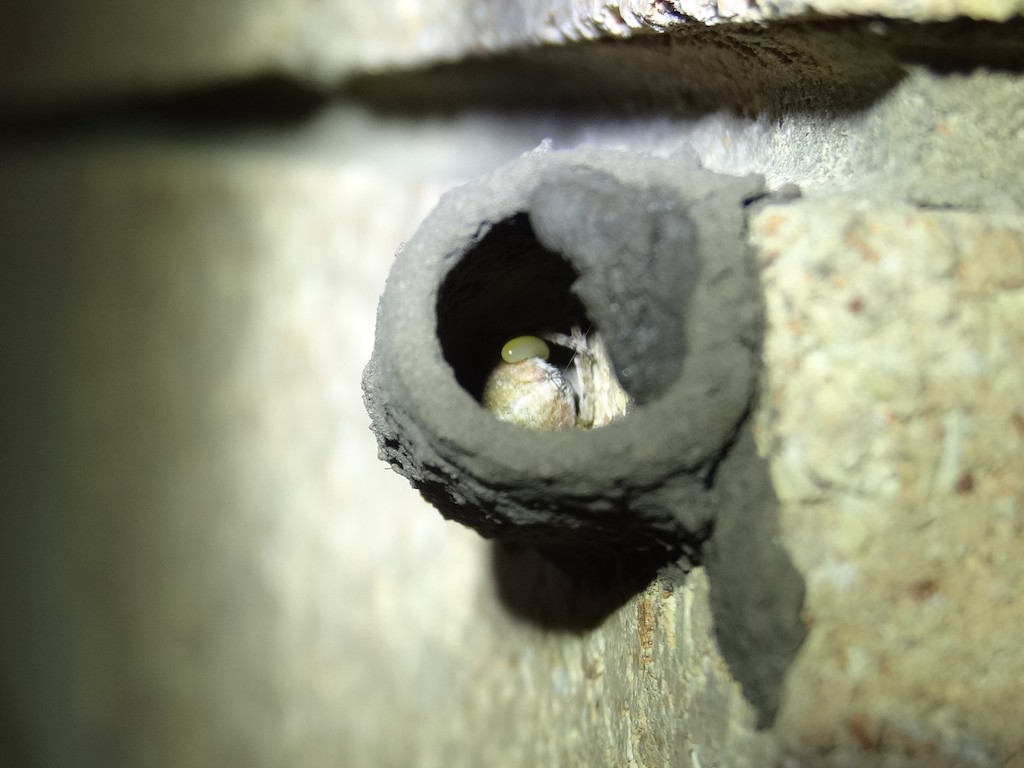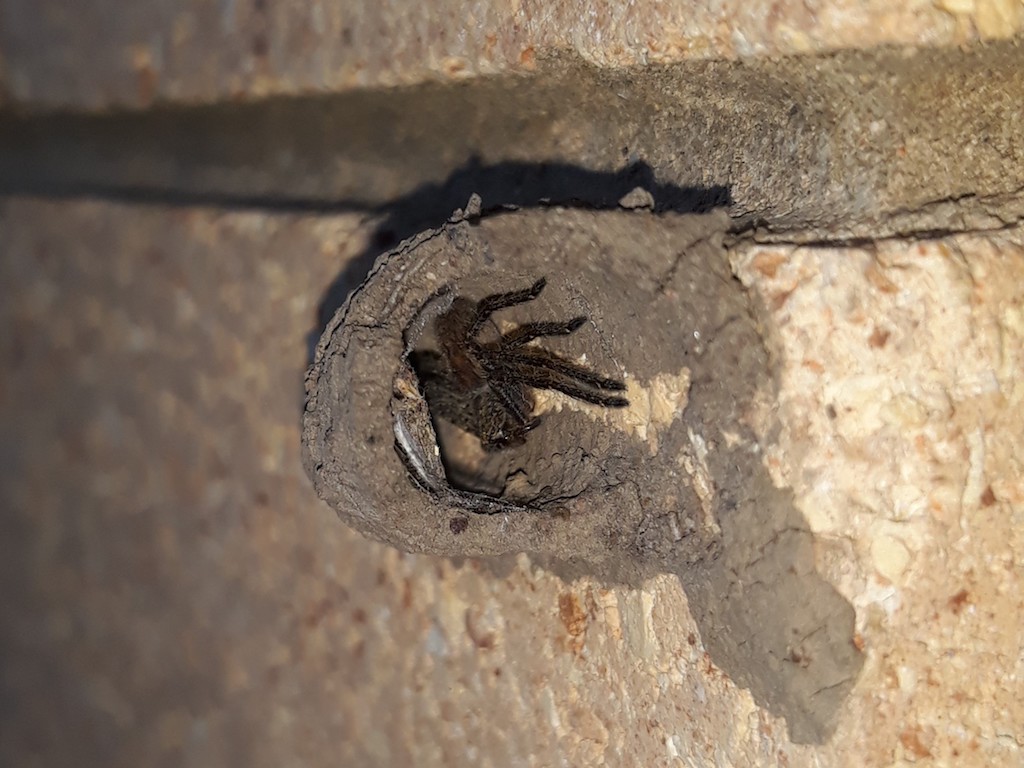
Tempting Fate
Manu Saunders

I love finding clusters of tiny earthenware urns attached to the walls of our house, some standing alone, others in tightly packed groups. They are signs that the great artisan potters of the insect world are at work in our garden.
Mud dauber wasps (Sceliphron species) are some of the most common artisans in Australia. Like most solitary wasps, they are not aggressive unless they feel threatened. They search for muddy puddles to build their nests, hovering like slender golden sprites, long legs dangling gracefully behind them. It can take days for the female wasp to transfer balls of mud from puddle to wall, carefully building the nest cell until it’s the perfect length (see picture above). How does she know when to stop?
These wasps are also spider hunters. She searches for one, paralyses it, and carries it back to the finished urn. She lays an egg on its paralysed body. When the wasp larva hatches it will devour the prepared spider meal, gaining the energy it needs to develop into an adult.

I never saw the wasp emerge. But the following year I spied a live spider sheltering in the abandoned urn. Tempting fate.

Manu Saunders is an ecologist who spends as much time as she can watching insects.